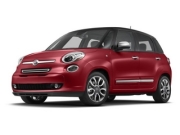The Cost of Safety
Airbags saved my life. A distracted driver ran a stop sign, and I T-boned him at 35 miles per hour. And while there were a host of injuries, head trauma wasn’t one of them. So one would think I favor their mandatory installation in all vehicles right?
Oh how wrong you are.
Mandating safety equipment, “average” MPG standards, and a host of other helpful hints have driven car prices to unbelievable levels. The average transaction cost for a new car was $12500 in 1993. Adjusted for inflation, that’s $20,255. Today, on the cusp of 2014, it’s $32,252. And true purchase price is further hidden by all the 7 year finance schemes out there. But that’s a story for another day.
In reality, government mandates not only drive up the cost of cars, they actually hinder some of the goals they are trying to  achieve. In the case of MPG standards, all cars must achieve 54.5 MPG by 2025. This is up from 36.5 in 2016. Setting aside the fact that government should leave market forces to determine these things, the simplest way to achieve these numbers is to shed weight. However airbags, back up cameras, and all the electronic stuff needed for an engine to run at these levels adds to the total.
achieve. In the case of MPG standards, all cars must achieve 54.5 MPG by 2025. This is up from 36.5 in 2016. Setting aside the fact that government should leave market forces to determine these things, the simplest way to achieve these numbers is to shed weight. However airbags, back up cameras, and all the electronic stuff needed for an engine to run at these levels adds to the total.

Here’s the kicker. In 1984, Chevy re-branded a Suzuki and called it the Sprint. It was bare bones. It weighed only 1600 lbs. It was stark slow, and pretty much a tin can. Yet it achieved an amazing 44/53 mpg without the benefit of modern electronics. Take the same idea (less weight, but with modern materials for strength,) make airbags optional, drop in a modern efi direct injection dual overhead cam 4 cylinder SIDI, maybe 6 cylinders even, and higher mileage is easy peasy. But all the mandatory crap would really drop the numbers.
“But that’s where hybrids and electric cars come in! This will force the evil corporations to develop these alternative vehicles!” Yes it will, at taxpayer expense. Currently, the production of electric cars is subsidized; Nissan and

Chevy and Toyota are producing cars witch are purchased with tax incentives. Which is a fancy way of getting others to partially pay for an overpriced car. And why are they overpriced, you ask? Incentives. When one gets tax money back, it’s taken from someone else. Take away the incentives, and my guess is sales would plummet. Then there’s that word “
force.” In other words, build this or else.
So what all this means is if those who would want to make our lives better by fiat, (Laws, not the Italian car) would just get out of the way and let us decide for ourselves what we want, they would be surprised by how far we can go without their help. If we want hybrids and alternative cars, we’ll have them. If we want massive SUV’s, ditto. Insanely fast muscle cars. Yes please!
I can dream, can’t I?
This entry was posted in Hot Rods, Muscle Cars and tagged Barricuda, cars, fast cars, Recreation.
